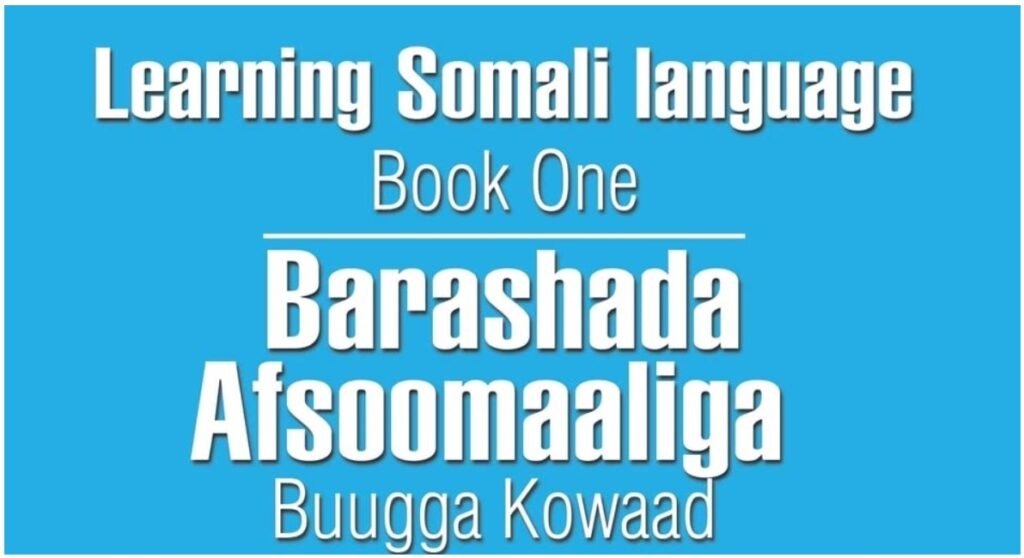Learning Somali Language: A Comprehensive Guide
Are you interested in learning Somali? Some quick tips for learning Somali have been put together by Best Language Services Ltd., a top provider of Somali translation services. I hope you can use this post as a resource.
Table of Contents
- Advanced Aspects of Learning Somali Language
Introduction to the Somali Language
Somali is an interesting language, full of interest and one of the world‘s unique and culturally rich languages. It belongs to the Lowland East Cushitic branch of the Afro-Asiatic family of languages. It is mainly spoken in Somalia but also in Djibouti, Ethiopia, Kenya, Yemen, and the unrecognized Republic of Somaliland. It is an official language in Somalia and the Somali Region of Ethiopia, a major national language in Djibouti, and a recognized minority language in Kenya. With a total of around 21.8 million speakers worldwide, of whom about 7.8 million live in Somalia, learning Somali opens doors to connecting with many people and understanding a diverse culture.
Somali Language at a Glance
Before diving into learning Somali, it’s helpful to know some basic facts about the language:
- Native name: Af-Soomaali, 𐒖𐒍 𐒈𐒝𐒑𐒛𐒐𐒘, اَف صَومالي˜ [æ̀f sɔ̀ːmɑ́ːlì]
- Language family: Afro-Asiatic, Cushitic, Lowland East Cushitic, Macro-Somali, Somali languages, Somali
- Number of speakers: About 21.8 million
- Spoken in: Somalia, Djibouti, Ethiopia, Kenya, Yemen, and Somaliland
- Writing systems: Latin (official), Arabic, Osmanya, Kaddare, and Borama scripts
The History of Written Somali
Somali has been written using various scripts over the centuries, including the Arabic script, the Latin alphabet, and the Borama, Osmanya, and Kaddare alphabets. Today, the official script for Somali is the Latin alphabet.
The Latin Alphabet for Somali
In 1961, both the Latin and Osmanya scripts were adopted for use in Somalia. However, in 1969, after a coup, the Latin alphabet was finally chosen in 1972, making Somali the sole official language of Somalia. This decision aimed to resolve the debate over the country’s writing system. Shire Jama Ahmed is credited with inventing this spelling system, chosen from eighteen competing orthographies.
Sample Text in Somali: “Aadanaha dhammaantiis wuxuu dhashaa isagoo xor ah kana siman xagga sharafta iyo xuquuqada Waxaa Alle (Ilaah) siiyay aqoon iyo wacyi, waana in qof la arkaa qofka kale ula dhaqmaa si walaaltinimo ah.”
Translation: “All human beings are born free and equal in dignity and rights. They are endowed with reason and conscience and should act towards one another in a spirit of brotherhood.”
Learning Somali for Beginners
Starting with Somali might seem daunting, but with the right resources and approach, it can be a rewarding experience. Here are some steps and tips to help you on your journey:
1. Learn the Alphabet
Begin with the basics: the Somali alphabet. The Latin script is used officially, and understanding how to read and write it is crucial. Practice writing letters, and familiarize yourself with their sounds.
2. Basic Phrases and Vocabulary
Learn some basic Somali phrases and vocabulary. Start with greetings, common expressions, and everyday words. Here are a few to get you started:
- Hello: Salaam
- How are you?: Sidee tahay?
- Thank you: Mahadsanid
- Yes: Haa
- No: Maya
3. Grammar Essentials
Somali grammar might be different from what you are used to, but it’s essential to understand the rules. Focus on sentence structure, verb conjugations, and the use of tenses. Simple sentences like “I am learning Somali” (Waan baranayaa af-Soomaali) can help you grasp the basics.
4. Listening and Speaking
Listen to native speakers and try to emulate the way they speak. Utilize online materials: YouTube videos, language apps, podcasts—listen to the language being used. Repeat the pronunciation and intonation.
5. Practice Regularly
Consistency is the key to learning a language. Set aside some time each day to practice. It could be writing a few sentences, speaking with a friend, or using a language app—whatever it is, consistency will help you improve bit by bit.
Resources for Learning Somali
There are numerous resources available to aid your learning:
Online Courses and Apps
- Rosetta Stone: Offers structured lessons to help you learn Somali step-by-step.
- Babbel: Another popular app that provides Somali language courses.
- Pimsleur: Focuses on listening and speaking skills through audio lessons.
Websites and Online Dictionaries
- Learn101: Offers lessons and resources for beginners.
- MyLanguages: Provides grammar and vocabulary lessons.
- Freelang: An online Somali dictionary for quick translations.
Books and Materials
- Somali Textbooks: Find books specifically designed for Somali learners.
- Phrasebooks: Useful for learning common phrases and expressions.
- Grammar Guides: Detailed books that explain Somali grammar rules.
The Importance of Learning Somali
It is not only a matter of learning a language but, most importantly, understanding and appreciating the rich cultural heritage. Somali connects millions of people across different countries. In the process of learning it, one goes deep into traditions, history, and daily life among the communities that speak it.
Moreover, Somali has a very rich oral tradition and literature, which can be appreciated to the fullest extent by people who understand the language. Whether for personal interest, travel, or connecting with Somali-speaking friends and family, learning Somali opens up a world of opportunities.
Advanced Aspects of Learning Somali Language
In the first part of our guide, we went over the basics of learning Somali, including the alphabet, basic phrases, and grammar essentials. Now, let‘s delve deeper into the unique writing systems of Somali, additional learning strategies, and the cultural richness that comes with mastering the language.
Writing Systems of Somali
Somalis have a very interesting history of written language, using different scripts throughout the centuries. Each of these scripts provides a window into the great cultural tapestry of the Somali speakers.

1. Latin Alphabet
As indicated, the Latin alphabet is the official script for Somali. It is straightforward for those accustomed to the Latin alphabet used in English and most other languages. This script was adopted in 1972 and is now the norm in writing Somali.
2. Arabic Script – Wadaad’s Writing
The Arabic script was introduced to Somali in the 13th century to facilitate Koranic teaching. This script, Wadaad‘s writing (وَداد), was based on the Maay dialect of Southern Somalia. It was modified several times over the centuries, notably in the 1950s when Somali linguist Muuse Xaaji Ismaaciil Galaal introduced new symbols for the vowels.
Sample Text in Arabic Script: صَومالي˜ [æ̀f sɔ̀ːmɑ́ːlì]
3. Osmanya Alphabet
The Osmanya alphabet was created in the early 20th century by Osman Yusuf Kenadid. This script, an attempt to come up with a special Somali writing system not using either the Latin nor the Arabic scripts, was meant to make it distinctive. Though not widely in use today, this definitely holds a place in the history of Somali linguistics.
4. Borama and Kaddare Alphabets
The other writing systems, which are specially designed for Somali, are the Borama, also known as the Gadabuursi alphabet, and the Kaddare alphabet. These scripts represent attempts on the part of scholars in Somalia trying to establish a writing system befitting the phonological characteristics of the Somali language.
Useful Somali Phrases
Learning useful phrases is a practical way to get comfortable with speaking Somali. Here are some phrases that can help you in everyday conversations:
- Good morning: Subax wanaagsan
- Good night: Habeen wanaagsan
- Please: Fadlan
- Excuse me: Iga raali ahow
- I’m sorry: Waan ka xumahay
- What’s your name?: Magacaa?
- My name is…: Magacaygu waa…
- Where is the bathroom?: Musqusha xaggee ka jirtaa?
- I don’t understand: Ma fahmin
- Can you help me?: Ma i caawin kartaa?
Somali Numbers
Learning numbers in Somali is essential for basic communication, especially when dealing with money, time, and quantities.
- One: Kow
- Two: Labo
- Three: Saddex
- Four: Afar
- Five: Shan
- Six: Lix
- Seven: Toddoba
- Eight: Sideed
- Nine: Sagaal
- Ten: Toban
Somali Learning Materials
Numerous materials are available to help you learn Somali more effectively. Here are some recommended resources:
Books
- “Colloquial Somali” by Martin Orwin: This book offers comprehensive lessons on Somali grammar, vocabulary, and pronunciation.
- “Somali Grammar” by John Saeed: A detailed guide to understanding the complexities of Somali grammar.
Online Resources
- Digital Dialects: Provides interactive Somali language games to practice vocabulary and phrases.
- Learn101: Offers free lessons on Somali grammar, phrases, and vocabulary.
- YouTube: Channels like AfSomali provide videos to help you learn Somali through listening and repetition.
Language Exchange
Practicing with native speakers is one of the best ways to learn a language. Apps like Tandem and HelloTalk will match you with native speakers of Somali ready to exchange language lessons. This will also enable you to gain insight into the culture.
The Cultural Significance of Learning Somali
Somali has been more than a challenge to learn; it means delving into a wealth of heritage. The culture of the Somalis is filled with oral traditions, poetry, music, and dance. One can appreciate Somali literature and folklore on a completely different level once the language is understood.
Oral Tradition and Poetry
Poetry forms an integral part of the culture, and poets are given a special place within society. The language has very many vocabularies and a wide expressive capacity, hence quite suitable for poetry. You can access a very rich literature of poetry, reflecting the history, struggles, and aspirations of the Somali people by learning Somali.
Music and Dance
Somali music is characterized by its distinct rhythms and instruments. Traditional songs are normally sung at special occasions such as weddings, celebrations, and religious ceremonies. If you know Somali, you will understand what the songs are about and the cultural context in which they are sung.
Additional Tips for Learning Somali
1. Set Realistic Goals
Set realistic goals for your learning process. Whether it is learning a certain number of words each week or being able to hold a basic conversation, having clear goals will help you stay motivated and gauge progress.
2. Use Technology
Take advantage of language learning apps and online resources. Apps like Memrise and Anki help with memorizing vocabulary using spaced repetition.
3. Join a Community
Find a community of Somali language learners or native speakers. Online forums, social media groups, and local cultural organizations can provide support and opportunities for practice.
4. Immerse Yourself
Immerse yourself in the language as much as possible. Watch Somali films, listen to Somali radio stations, and read Somali books or news articles. Immersion helps reinforce what you’ve learned and improves your listening and comprehension skills.
Conclusion
Learning Somali is a journey with so many rewards, from understanding a rich cultural heritage to connecting with millions of Somali speakers around the world; mastering this language is both valuable and enriching. From the very basics through the use of available resources, up to immersing oneself in the culture, one can go a long way in learning Somali. The only thing to keep in mind is to practice regularly, stay motivated, and enjoy the process of unveiling this beautiful language.
By following the steps and tips outlined in this guide, you’ll be well on your way to becoming proficient in Somali. Whether you’re learning for personal interest, travel, or to connect with Somali-speaking friends and family, the journey will undoubtedly be a rewarding one. Happy learning!


